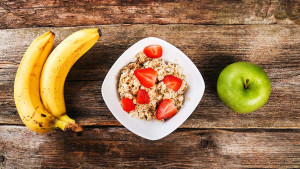Did you know that 2012 is the hundredth anniversary of the discovery of vitamins? Melody Tan investigates their functions and sources.
We all know that vitamins are good for us. Many of us take supplements to boost the supply of vitamins in our bodies. However, it wasn’t until 1912 that Polish biochemist Casimir Funk actually came up with the concept of vitamins, which he called vital amines.
Essentially, vitamins are tiny organic compounds that all living organisms need. They aid in metabolism, the conversion of fat and carbohydrates into energy, and they also play a part in the creation of bone and soft tissue.
Funk discovered vitamins when he determined that thiamine (also known as vitamin B1), which is present in brown rice, cured the nervous system ailment called beriberi. Funk also believed that vitamins could cure other diseases that were common at that time, including scurvy, rickets and sprue.
Looking at the vast array of vitamins and supplements available at local health food stores today, it’s hard to believe that prior to the 1930s food was the only source for vitamins. And for those of us living in the developed world, the vitamin supplement industry is largely unnecessary, since we can still get all the vitamins we need from the food we eat. In addition, many processed foods have vitamins and minerals added to them.
There are 13 universally recognised vitamins today. What are they, what are their main functions and where can we find them?
Vitamin A (Retinol)
Main Function: Vitamin A is important for vision. It helps the retina of the eye to function properly, particularly at night. Night blindness is an early sign of deficiency and blindness can result if preventative steps are not taken. Vitamin A also aids in maintaining healthy skin and it is sometimes used in the treatment of acne. It also plays a role in the growth of bones and it helps to regulate the immune system and fight infection.
Source: Vitamin A is found in deep orange and dark green fruits and vegetables such as carrots, broccoli, kale and spinach. Eggs also contain vitamin A.
Vitamin B1 (Thiamine)
Main Function: All eight of the B vitamins help the body to convert fat and carbohydrates into energy. They are needed for healthy skin, hair, eyes and liver. Thiamine was the first to be discovered. It is essential for heart health and for the brain and nervous system to function properly.
Source: Whole grains are great sources of vitamin B1. You can also find it in yeast and yeast extract, brown rice, oatmeal, cauliflower and potatoes. Some processed foods also have vitamin B1 added.
Vitamin B2 (Riboflavin)
Main Function: Riboflavin is an antioxidant that fights the free radicals that damage the body. It plays a key role in breaking down and distributing fats, carbohydrates and proteins throughout the body. It also aids in the absorption of iron and vitamin B6.
Source: Excellent sources of vitamin B2 include mushrooms, soybeans, yoghurt, eggs and dark, leafy greens such as brussels sprouts, broccoli and spinach. Some commercial flours and cereals are also fortified with this vitamin. Be sure to store these foods in the dark, since riboflavin is easily destroyed by light. It can also be lost in water when food is boiled or soaked.
Vitamin B3 (Niacin)
Main Function: Vitamin B3 helps to increase the level of good cholesterol (HDL) in your body, thus improving circulation. It is also involved in the repair of DNA.
Source: Among the better sources of vitamin B3 are avocados, tomatoes, dates, asparagus and nuts.
Vitamin B5 (Pantothenic Acid)
Main Function: Vitamin B5 aids in the manufacture of red blood cells and it helps to maintain a healthy digestive tract. It also helps the body to use other vitamins, especially B2.
Source: While it’s available in a wide variety of foods, much of it can be lost if the food is cooked or processed. Among the good sources of vitamin B5 are broccoli, avocados, lentils, cauliflower and whole grains.
Vitamin B6
Main Function: Like the other B vitamins, B6 helps the body to convert fat and carbohydrates into energy, and it contributes to healthy skin, hair and eyes. Vitamin B6 is also involved in brain development of the fetus during pregnancy and infancy, and it helps the immune system to function well. It is sometimes used as a treatment for morning sickness.
Source: You can obtain vitamin B6 from bananas, nuts, starchy vegetables (like potatoes) and whole-grain products.
Vitamin B7 (biotin)
Main Function: Biotin is necessary for cell growth and metabolism. It aids in the transfer of carbon dioxide in the body, and it is believed to strengthen the hair and nails. It helps the body to maintain a steady blood sugar level.
Source: Fortified cereals are your best bet. You can also find vitamin B7 in barley, corn, nuts and soy.
Vitamin B9 (folic acid, folate)
Main Function: Vitamin B9 aids in cell division and growth, such as in infancy and during pregnancy. It also plays a part in the proper development of a baby’s nervous system. It helps our bodies to produce healthy red blood cells and to prevent anaemia.
Source: Leafy vegetables like spinach and turnip greens are a principal source of vitamin B9. Broccoli, certain fruit juices and legumes (including beans, peas and lentils) are also good sources of this vitamin. And it’s common in fortified cereals and bread.
Vitamin B12
Main Function: Vitamin B12 plays an important role in preventing a number of neurological problems, including numbness or tingling in the hands and feet, insomnia, loss of memory and depression. It helps our body’s red blood cells to mature normally and it aids in the development of DNA, our genetic material.
Source: Vegetarians and vegans tend to have lower intakes of vitamin B12 because plant foods do not naturally contain it. However, soy and rice milks commonly include B12 as an additive, as do yeast extracts and vegetarian burgers. Vitamin B12 can also be found in eggs, milk, cheese, yoghurt and other dairy products.
Vitamin C
Main Function: Practically a celebrity in the world of vitamins, almost everybody reaches for a vitamin C pill at the first sign of a cold. Besides increasing the production of disease-fighting white blood cells and antibodies, thereby boosting the immune system, vitamin C is helpful in maintaining good eyesight.
Source: Many fruits are rich in vitamin C, including citrus, pineapple, berries and papaya.
Vitamin D
Main Function: The sunshine vitamin plays a key role in bone health. Low levels of vitamin D are linked with a growing list of health problems, including multiple sclerosis, osteoporosis, osteoarthritis, rickets, heart disease, diabetes, depression and several kinds of cancers.
Source: Unlike other vitamins, the best way to obtain vitamin D is not from food but to simply step outdoors. The reason: our bodies develop it from sunshine. Often, about 15 minutes of exposure to sunlight a day is enough for the body to produce an adequate amount of vitamin D.
Vitamin E
Main Function: Studies have shown that people with high dietary intakes of vitamin E and zinc are protected against age-related macular degeneration, an eye condition common among people aged 50 and older. Vitamin E also protects against Alzheimer’s disease. High in antioxidants, vitamin E helps the immune cells to produce antibodies, and it can help to reverse some of the decline in immune function that comes with ageing.
Source: Vitamin E is common in seeds and nuts such as sunflower seeds, peanuts and almonds. Whole-grain cereals and rice bran are also good sources of this vitamin.
Vitamin K
Main Function: Vitamin K helps your blood to clot normally and it plays an important role in bone health.
Source: For almost everyone, the bacteria in our intestines makes vitamin K. It’s also found in green, leafy vegetables, including spinach, broccoli and brussels sprouts. Fruits such as grapes, kiwi fruit and avocados are also rich in vitamin K.
So there you have it—your vitamins explained from A to K.
So while vitamins are beneficial and in fact essential to your well-being, remember that too much of a good thing can be a bad thing. You can overdose from vitamin supplements, causing you to run the risk of toxicity. (Always seek professional advice before you begin a course of vitamin supplements, especially if you are pregnant or breastfeeding.)
On the other hand, you won’t likely overdose merely from your food intake. The key to maintaining a healthy and vitamin-rich life is to consume a wide variety of fresh, whole foods.







